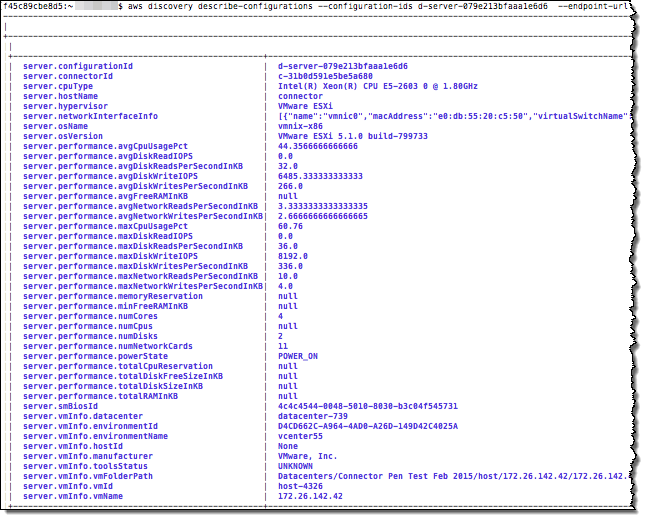AWS News Blog
AWS Application Discovery Service Update – Agentless Discovery for VMware
|
|
As I wrote earlier this year, AWS Application Discovery Service is designed to help you to dig in to your existing environment, identify what’s going on, and provide you with the information and visibility that you need to have in order to successfully migrate your systems and applications to the cloud (see my post, New – AWS Application Discovery Service – Plan Your Cloud Migration, for more information).
The discovery process described in my blog post makes use of a small, lightweight agent that runs on each existing host. The agent quietly and unobtrusively collects relevant system information, stores it locally for review, and then uploads it to Application Discovery Service across a secure connection on port 443. The information is processed, correlated, and stored in an encrypted repository that is protected by AWS Key Management Service (AWS KMS).
In virtualized environments, installing the agent on each guest operating system may be impractical for logistical or other reasons. Although the agent runs on a fairly broad spectrum of Windows releases and Linux distributions, there’s always a chance that you still have older releases of Windows or exotic distributions of Linux in the mix.
New Agentless Discovery
In order to bring the benefits of AWS Application Discovery Service to even more AWS customers, we are introducing a new, agentless discovery option today.
If you have virtual machines (VMs) that are running in the VMware vCenter environment, you can use this new option to collect relevant system information without installing an agent on each guest. Instead, you load an on-premises appliance into vCenter and allow it to discover the guest VMs therein.
The vCenter appliance captures system performance information and resource utilization for each VM, regardless of what operating system is in use. However, it cannot “look inside” of the VM and as such cannot figure out what software is installed or what network dependencies exist. If you need to take a closer look at some of your existing VMs in order to plan your migration, you can install the Application Discovery agent on an as-needed basis.
Like the agent-based model, agentless discovery gathers information and stores it locally so that you can review it before it is sent to Application Discovery Service.
After the information has been uploaded, you can explore it using the AWS Command Line Interface (AWS CLI). For example, you can use the describe-configurations command to learn more about the configuration of a particular guest:

You can also export the discovered data in CSV form and then use it to plan your migration. To learn more about this feature, read about the export-configurations command.
— Jeff;
